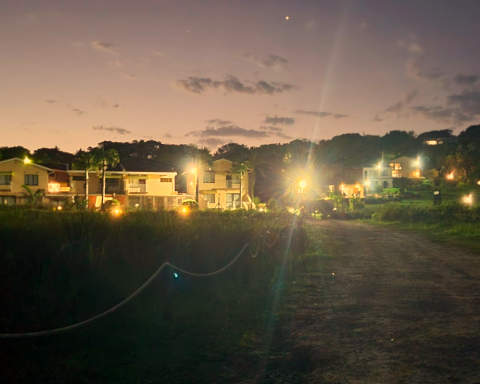The International Dark Sky Project

Most of us are familiar with air pollution, water pollution and land pollution, but did you know that light is also a form of environmental pollution?
Light pollution is the human-made change in outdoor light levels from those that occur naturally. Too much light at night disrupts wildlife, has a negative effect on human health, and blocks our view of the universe to the point where many of us can't even see the stars anymore.
For billions of years all life has relied on a regular cycle of day and night. In fact, it’s encoded in the DNA of all plants and animals. Life on Earth depends on the natural daily cycle of light and dark to govern essential behaviour such as reproduction, nourishment, sleep, and protection from predators. Humans have radically disrupted this by lighting up the night. This problem is made even worse by the fact that many nocturnal creatures have much more sensitive eyesight than humans do. Light levels that may seem acceptable to us can be very bad to them.
Scientific evidence shows that artificial light at night can have deadly effects on many creatures including amphibians, birds, mammals, insects and plants. Many studies have also shown that too much exposure to artificial light at night negatively affects human health. Light pollution, like all other forms of pollution, is a global problem.
So what can we do?
Of course we all need a certain amount of light in order to continue our normal activities after dark, and to provide a degree of security. But the good news is that each of us can make a difference, because the solution is quite simple: just don´t use more light than you really have to!
Here are a few suggestions you can implement right now.
Don't use over-bright lights
We all need some light. But does the entire neighbourhood need our lights as well? A light that is brighter than it has to be serves no purpose. If your patio lights also light up the entire road or if your garden lights can be seen from half a block away, you are just wasting electricity. Simply replacing these lights with smaller, lower-wattage ones will make a big difference and save you money.Target your lights
Many of us prefer the area around our houses to be lit, not only so that we can see where we're going after dark, but also to provide a much-needed deterrent against intruders. Unfortunately most of our lights are pointed the wrong way around: from the center of our properties outward, while they should be at the edge of our properties, pointing inward. Avoid wide-beam flood lights wherever possible and use shielded light fixtures instead. And last but not least: point your lights down rather than have them project a horizontal glare.Use sensor lights
Lighting our properties while there is no-one outside serves no purpose. Replacing permanent lights with sensor lights is a simple yet very effective solution. As soon as we step outside, the light will come on so we can see where we're going, and as soon as an intruder tries to enter the property the security lights will be triggered. The latter is a very effective deterrent, since it not only provides light to expose the intruder but also because the triggering of the lights serves as an alarm signal that draws attention.Use "warm white" lights
"Cool white" light has a greater component of blue, which is a shorter wavelength of light that is more prone to scattering in the atmosphere and creating sky glow. The blue light component also has a more disruptive effect on wildlife, suppresses melatonin production in humans (which disrupts our sleep) and may cause other health issues such as migraines. Warm white lights are also easier on the eyes than the often sharp, harsh glare produced by cool white globes. While cool white LED lights have a slightly higher energy efficiency than warm white LEDs, this difference is usually too small to be noticeable on a household electricity bill and will generally make very little difference in corporate external lighting costs.Engage with your neighbours.
While South Africa has little or no legislation governing the deployment of lights in an annoying or intrusive manner, we can raise awareness of the problem by simply mentioning it to our neighbours. Many people will gladly adjust the direction or position of their outside lights if you ask them nicely. Most people don't even realize the annoying and harmful effects their lights may have. If you stay positive, don't argue and make sensible suggestions, you may very well be pleasantly surprised with the results.
Note that none of this has to be done all at once. Adjusting the position and angle of your lights is often fairly simple, but replacing them can be done gradually on an as-needed basis. When a light has reached the end of its service life, simply choose a better option to replace it with.
More information on light pollution and what to do about it is available from Dark Sky International.